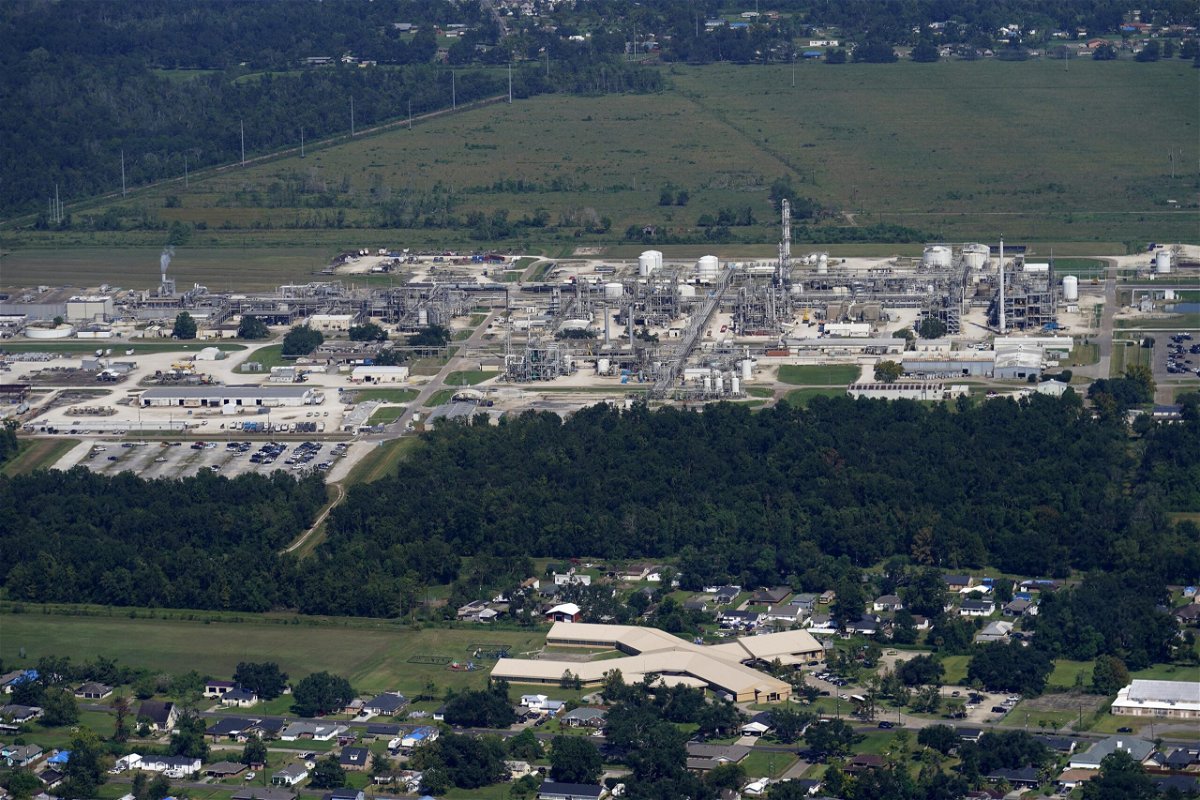New EPA rules for about 200 US chemical manufacturers take aim at ‘cancer alleys’

By Brenda Goodman, CNN
(CNN) — The US Environmental Protection Agency issued new rules on Tuesday to protect neighborhoods near more than 200 manufacturing facilities that release airborne toxins such as ethylene oxide, chloroprene, benzene, vinyl chloride, 1,3 butadiene and ethylene dichloride.
According to EPA studies, about 104,000 Americans live within 6 miles of factories that churn out certain synthetic organic chemicals or use them in the production of polymers and resins. Their risk of cancer from that exposure is above 1 in 10,000 people — a threshold the agency deems to be unacceptably high.
Other EPA studies have shown that people living near industrial chemical producers are disproportionately poor and more likely to be Black or brown compared with the general population.
The new rule cuts the amounts of hazardous pollutants these factories would be allowed to release by about 6,200 pounds and substantially reduces the cancer risks from hazardous airborne pollutants.
“This rule alone will reduce the cancer risk for people living in these communities by 96%,” EPA Administrator Michael Regan said in a news briefing.
In a hard-fought victory for environmental advocates, the rule will also require air monitoring at the perimeter, or fenceline, of the property. This way, companies will know when hazardous air pollutants are leaking from their facilities, and they will have to find and fix the leaks if they are above a threshold that’s deemed to be unsafe.
“This is about whether a child gets leukemia or whether a mother develops breast cancer. It’s about neurological impairment, respiratory disease, heart attacks and stroke. In a very real sense, for many, this is a question of life and death,” said Patrice Simms, vice president for healthy communities at Earthjustice.
This is only the second time the EPA has required companies to monitor the air for chemicals at their fencelines. The first such instance was in 2015, when the EPA required petroleum refineries to monitor for cancer-causing benzene. The results are posted on a public dashboard on the EPA’s website. The agency says in intends to make the results of this new round of air monitoring data available to the public, too.
The agency also extended the deadline that companies have to start doing this fenceline monitoring. The proposed rule had called for companies to begin fenceline monitoring a year after the new rule went into effect. Now, companies will have two years to comply. Chemical companies have complained that they needed more time to get the monitoring up and running. Laboratories still need to develop ways to test for these chemicals too.
The exception will be for companies that make neoprene, a manufacturing process which releases cancer-causing chloroprene. Those facilities will have to comply within 90 days.
This portion of the rule covers the area around the Denka Performance Elastomer plant in an area of Louisiana that became known as “Cancer Alley.” In 2016, the EPA discovered that St. John the Baptist parish had the highest cancer risk in the country — about 15 times higher than it’s acceptable limit — largely due to emissions from that plant.
EPA’s Regan said the new rules would cut emissions of ethylene oxide and chloroprene by more than 80%.
The new rule for chemical manufacturers comes just weeks after EPA finalized new tougher rules for facilities that use ethylene oxide gas to sterilize medical equipment, spices and other items.
The agency said it is continuing to study ways to control other sources of ethylene oxide exposure, for example, from warehouses storing sterilized products that off-gas into the atmosphere.
The agency also says it is conducting research to better understand and measure ethylene oxide.
The-CNN-Wire
™ & © 2024 Cable News Network, Inc., a Warner Bros. Discovery Company. All rights reserved.
